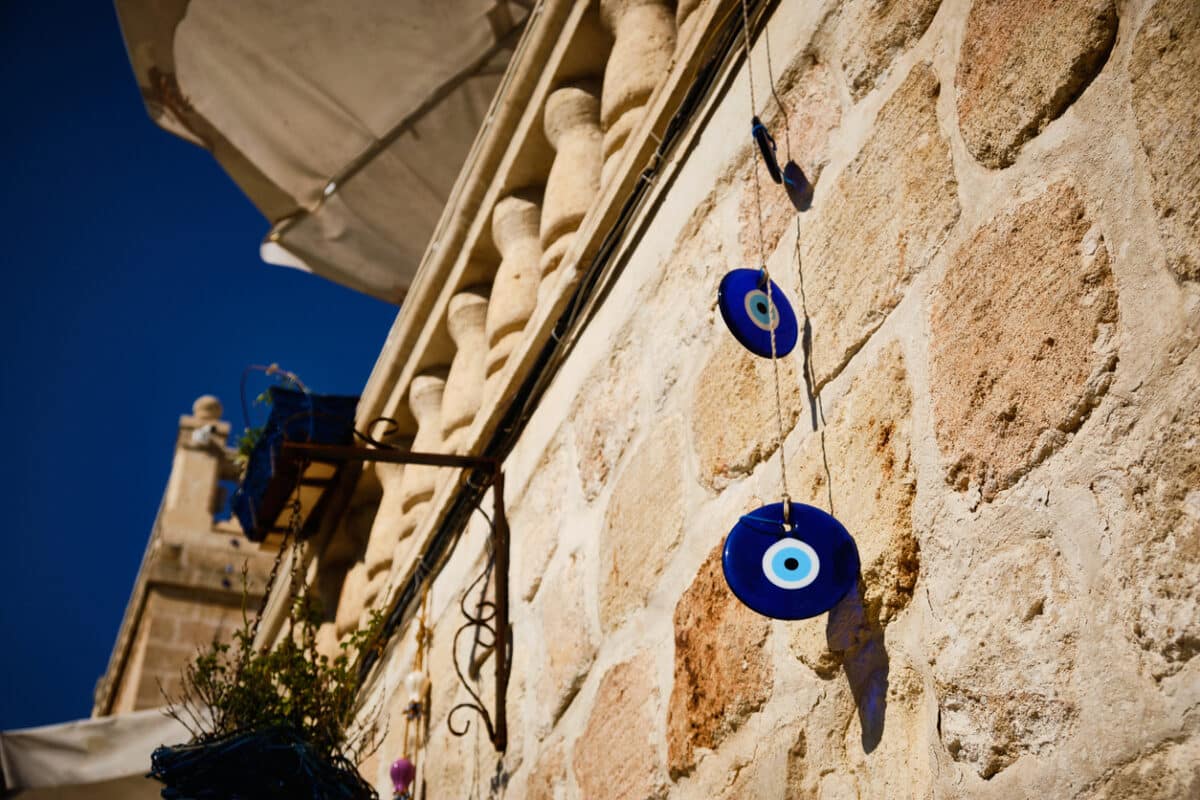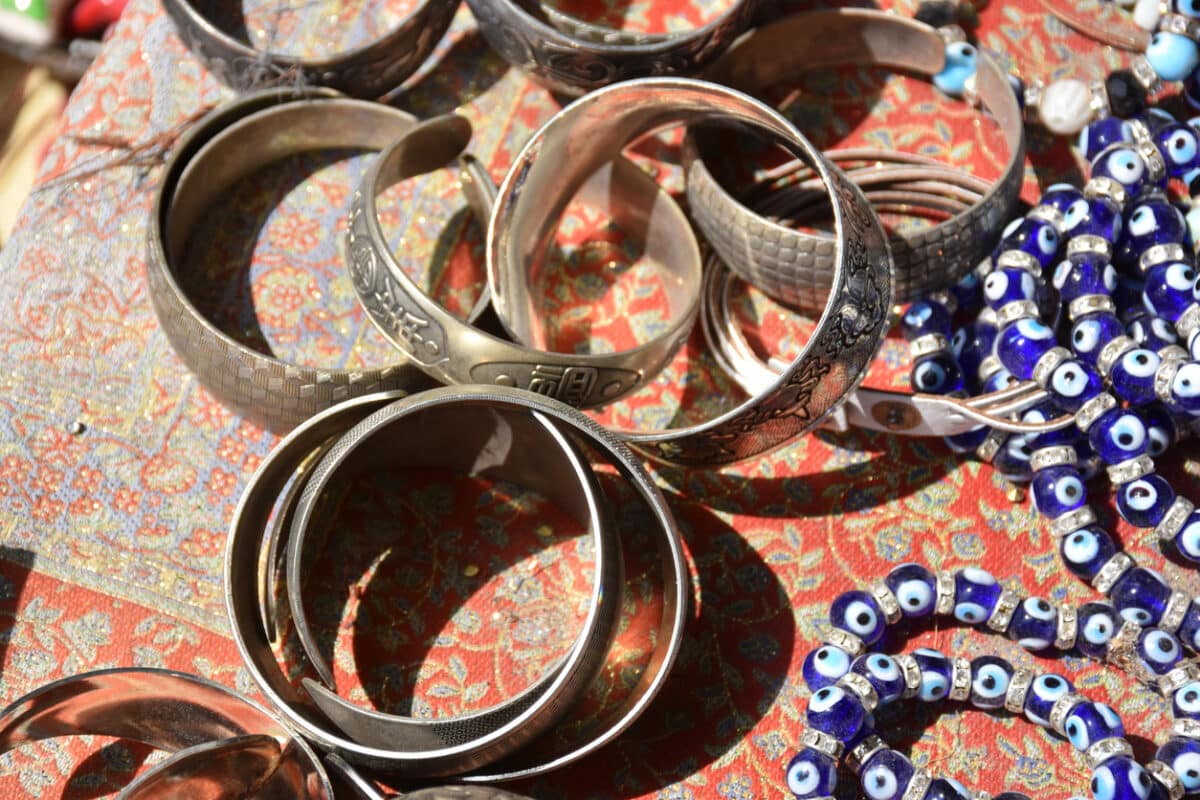Familiar with the age-old belief in the evil eye curse?
Heard your grandparents talk about a malevolent glare that’s thought to bring misfortune?
Or perhaps you’ve seen these gorgeous blue and white, eye-shaped amulets and wondered what they’re for?
That blue glass bead is called the Nazar charm, a symbol of protection against the dreaded evil eye.
In This Guide:
The Legend Of The Evil Eye Curse
Let’s delve into the fascinating world of these charms and understand how they offer protection from this ancient and super common curse.
What Is The Evil Eye Curse?
Rooted deep in human history, the evil eye is a curse believed to be cast by a malevolent glare, often unintentionally.
Simply put, if someone is jealous or judgemental of you, it is said that their stare sends bad vibes your way.

Historically, people thought to be most at risk include the overly prosperous or exceptionally attractive, with envy or ill-will triggering the curse.
It’s believed to cause various misfortunes, from minor mishaps to severe tragedies.
Origin & Cultural References
The belief in the evil eye spans numerous cultures.
From Ancient Greece and Rome to modern Middle Eastern, African, and Asian societies, this curse has found its place in various folklore and traditions, underscoring its universality.
What Is A Nazar Charm?
The Nazar charm, also known as the evil eye amulet, is typically a stunning blue and white piece, often made of glass.
It features concentric circles or teardrop shapes that represent an eye. This “eye” symbolizes a protective gaze that counters the malevolent look of the evil eye, metaphorically “watching out” for the wearer.
Historical Background Of The Evil Eye Charm
Originating in ancient Anatolia (modern-day Turkey), the Nazar charm has been adopted by various cultures, each adding its unique interpretations and symbolism to it.

The Power of the Nazar Charm Against the Evil Eye
Protective talismans like the Nazar charm are believed to ward off negative energy or harm.
They work based on the Law of Similarity – a principle from sympathetic magic stating that like influences like.
How The Nazar Charm Works
The Nazar charm operates as a “surrogate eye,” attracting the evil gaze and deflecting it from the person or object it’s protecting.
When the charm breaks or is damaged, it’s believed to have protected the owner from significant harm.
How We Incorporate The Nazar Charm Into Our Daily Life
Regardless of how you choose to incorporate your evil eye charm, the key is this:
- Keep the charm somewhere you can see it.
- Each time you see the charm, visualize all of the jealousy, gossip, hate, and envy being directed at that blue, glass eye, instead of yours.
- See yourself as protected.
1. Wear The Nazar Charm
Incorporate the evil eye charm into your jewelry and accessories, such as necklaces, Nazar charm bracelets, or earrings.

Wearing them is a common way of keeping this protective amulet close.
2. Place The Nazar Charm At Home Or Work
Hang the charm in your home, cars, or workplace as a protective symbol to guard you against envy and jealousy from visitors and coworkers.
How To Choose & Care For Your Nazar Charm
When choosing a Nazar charm, consider its aesthetic appeal to you and its intended purpose.
It should resonate with your personal style or the environment where it will be placed.
To care for it, cleanse it regularly to remove any negative energy it may have absorbed.
The Nazar charm, with its vivid allure and potent symbolism, continues to captivate us, serving as a protective shield against the dreaded evil eye.
Whether viewed as an attractive piece of jewelry, a cultural token, or a magical talisman, it’s a fascinating aspect of our shared human history and collective unconscious.



